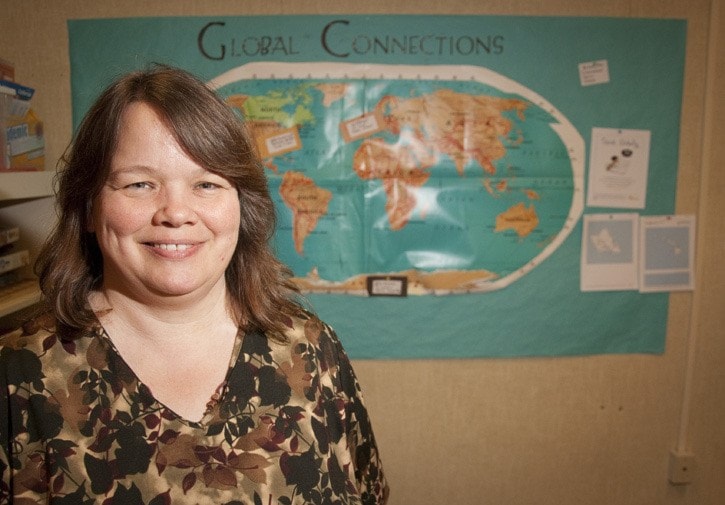“The level doesn’t define you,” said Marilyn Gammon.
Gammon is a Grade 4/5 teacher at David Hoy Elementary, but she isn’t necessarily just any teacher.
Gammon was recently recognized for her work by a research group out of Stanford University who have developed strategies to help improve learning mindsets.
Their strategies work on directing the learner’s mindset towards a growth-oriented attitude.
While a fixed mindset would react to poor results on a test with the attitude the results show them to be a failure and subsequently give up, a growth mindset approach would be to take a poor result and try to figure out how to improve on it.
By utilizing different language, teachers can encourage a more growth-oriented approach instead of a strictly results-oriented approach, allowing students to make mistakes to learn, and showing them hard work pays off.
Gammon had written to the Brainology group, as the researchers are called, about what she was doing with her students at the end of last year.
Gammon had worked on goal-setting for the students before the summer break, and took the class to get library cards, so they would be able to continue learning through the summer.
This helped the students to plan for the long break, and have strategies to keep busy and growing.
“It’s really simple, and it’s really positive,” said Gammon.
The Brainology group then recognized Gammon’s approach by making her the Growth Mindset Educator for July.
But Gammon is innovative in more than just her approach to learning by encouraging a growth mindset, she is also embracing new technology.
The teacher has started a blog which both parents and students can use to keep on top of what is happening, and comment on it as well.
She started the blog to make learning more transparent for the families, and it gives access to what they are doing 24 hours a day, seven days a week, so parents can check in and have a look anytime.
There are links to some of the topics or areas of study, and there are even photos of some of the activities students are doing.
The blog has been a tool Gammon has used successfully for a few years, and now she has also added a Twitter account to her tool bag of social media for education.
The mini-blogging site has allowed the class to make connections around the world and they now have contacted a class in Ireland they are doing a swap-box with.
The class puts relevant items of Canadian culture in the box and then mails it to the class in Ireland, which then sends it back with items of Irish culture in it.
They have also made connections with other classes around the world, they are learning from a Mandarin language class in Hawaii and have started following a blog from a class in New Zealand.
Her class last year, during the winter deep-freeze, took snow depth measurements in the field and tweeted them to the Cryosphere Research Project, a “citizen scientist” research activity which gets the public involved in gathering information for research.
“My mission is kind of to remove the classroom walls,” said Gammon. “To bring more and more into the classroom for them.”
The class is also Skyping, and have done three different author visits now and the students have gotten to speak to actual authors who discuss their books and tell them about writing and the kids then can ask questions directly of the authors.
They have also had a Skype discussion from actors who were on the television show on Nickelodeon called the Naked Brothers Band about bullying for this month’s anti-bullying theme.
“It’s really nice because there’s a lot of people who want to share their knowledge,” explained Gammon.
Gammon’s classroom blog can be found at: http://4dragons.wordpress.com and the class’ Twitter ID is @room3MrsG.
